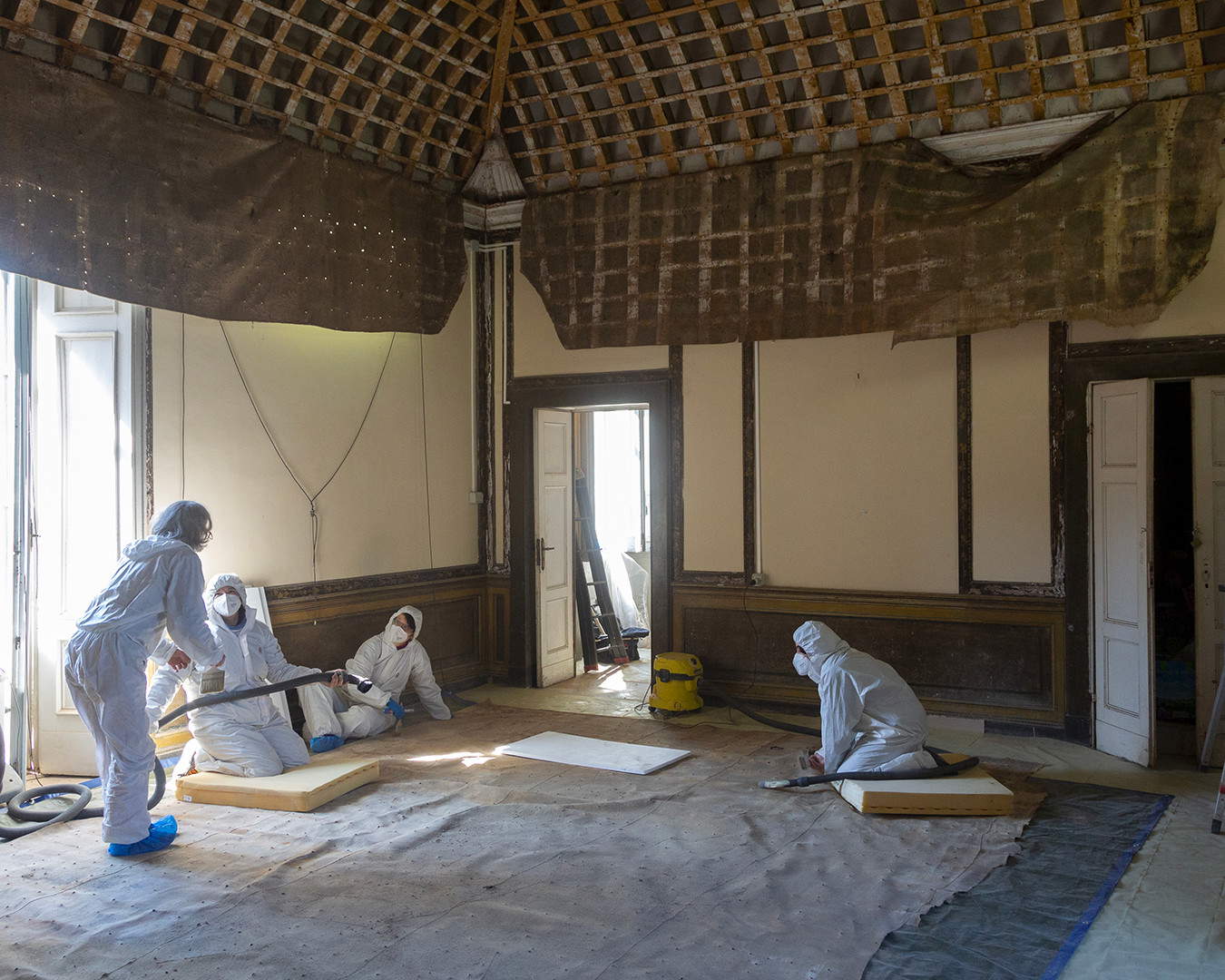As part of its activities to protect and enhance the rich historical and artistic heritage, the Royal Palace of Caserta has begun the restoration of the large canvases in the Real Casino del Bosco di San Silvestro. Three large paintings decorate the vaults of the Yellow Room, the Hall of Bacchus and Ariadne and Diana the Huntress, on the second floor of the building designed between 1797 and 1801 by architect Francesco Collecini.
The restoration operation, financed through targeted planning of the Museum’s ordinary funds, is within a particularly complex technical context. The size, delicacy and historical stratification of the Reggia’s works require a constant balance between conservation needs and limited economic resources, imposing a rigorous approach from a technical and administrative point of view, supported by specialized skills and a strategic vision. Against this backdrop, the decision was made to prioritize the recovery of the canvases, the conservation of which was endangered by progressive deterioration that compromised their stability and legibility.
The works presented serious problems: detachment and subsidence with respect to the wooden support structures, oxidation of the metal components, tears, fabric deformation, and chromatic alterations accompanied by loss of the paint film. In particular, the canvas in the “Bacchus and Ariadne” room was seriously damaged, partially detached from the vault, necessitating its transfer to the laboratory. After preliminary consolidation and securing, the work was entrusted to a specialized company for transport to the restoration laboratory of Magistri s.r.l., where diagnostic analyses and technical tests are currently underway. During the removal from the ceiling, an initial analysis was performed that led to the hypothesis that the canvas was made by stitching together several portions, on which the painting would later be executed.
The other two paintings, of the Yellow Room and Diana the Huntress, will instead be restored directly on site to avoid further risks from handling. Diagnostic surveys have been carried out in all the affected rooms, including thermographic surveys of the wooden ceilings (a non-invasive infrared technique to measure their internal temperature) and resistography tests to assess the consistency of the wood. These data, currently being processed, will help to better understand the structure of the ceilings and to define the optimal methods for future re-anchoring of the canvases. Three micro-samples were also carried out to study the painting technique and original materials. The project includes, upon completion of the work, the repositioning of the removed canvas in its original place.
The Forest of San Silvestro, along with the Site of San Leucio, the Royal Park and the English Garden, was part of the “Royal Delights” of the Bourbons. The entire estate, covering about 76 hectares on the hills of Mount Maiuolo and Mount Briano behind the Park, is traversed by the waterfall that feeds the fountains of the Vanvitellian Complex. The area was used for agricultural and hunting activities, following the model of the great European courts. In 1922, ownership passed from Crown Estate to State Property, and later management was transferred from the Province to the Ministry of Cultural Heritage. Since 1993, the site has been in the care of WWF and open to the public. The Casino hosts workshops and initiatives promoted by La Ghiandaia, a company that takes care of the Bosco di San Silvestro Oasis on behalf of WWF Italy.
 |
| Royal Palace of Caserta, large canvases from the Royal Casino of the Bosco di San Silvestro under restoration |
Warning: the translation into English of the original Italian article was created using automatic tools. We undertake to review all articles, but we do not guarantee the total absence of inaccuracies in the translation due to the program. You can find the original by clicking on the ITA button. If you find any mistake,please contact us.